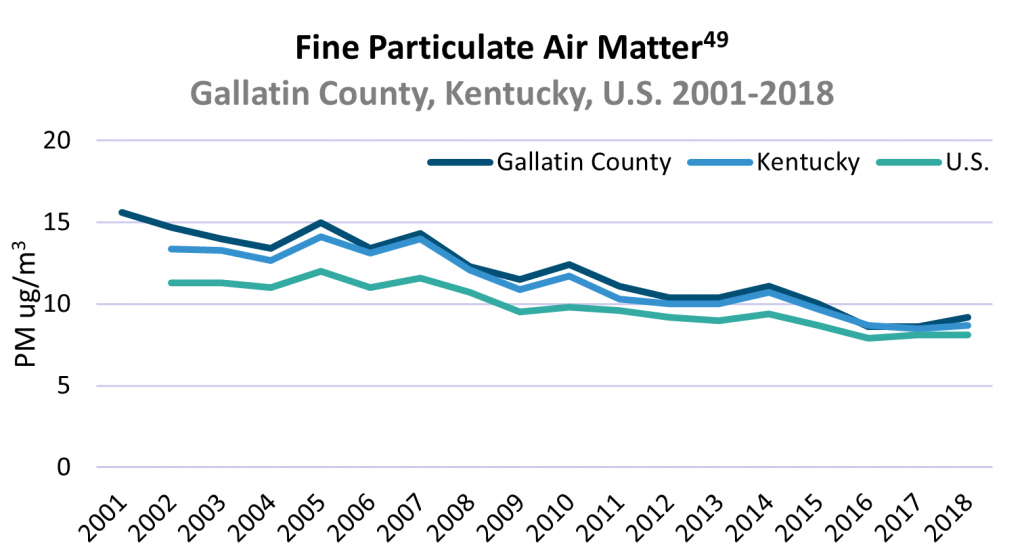
HEALTH RISK BEHAVIORS
AIR PARTICULATE MATTER
Per the CDC, Environmental Public Health Tracking Network, air pollution poses a public health threat affecting potentially millions of people throughout the U.S.46 Pollution such as dust, dirt, soot, and smoke are one kind of air pollution called fine particulate matter (FPM). Sources of FPM include forest fires, power plants, industries, and automobiles. FPM is associated with compromised health and may lead to breathing problems, worsening of asthma symptoms and/or worsening of some heart conditions, as well as increased low birth weight47.
Decreased lung function, chronic bronchitis, asthma, and adverse pulmonary effects are common in populations exposed to high levels of FPM. Long term exposure is associated with premature death of people aged 65 and older even when exposure is at levels below the National Standards48. Since 2001 FPM rates in Gallatin County have decreased by 41% to 9.2 PM ug/M3 in 201849.
Rates below 12 PM Ug/m3 are considered acceptable according to the U.S. Environmental Protection Agency
